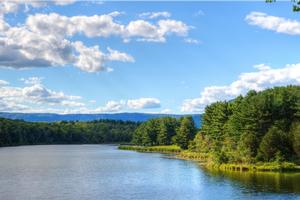Environment
Charting a Course for Net Zero Carbon by 2050

Phasing out fossil fuel emissions and replacing it with renewable, sustainable energy for all by 2050 is lofty goal. Experts gathered for an event at AU School of Public Affairs (SPA) say the transformation to net zero carbon is technologically possible, if there is the will to make it happen.
Dan Fiorino, director of SPA’s Center for Environmental Policy, moderated the discussion that featured Karl Hausker, senior fellow at World Resources Institute; Sarah Hunter, co-founder and chief executive officer of the Joseph Rainey Center for Public Policy; and Justin Ong, program director at Clear Path, managing the nonprofit’s hydropower and clean fossil energy work.
The panelists referred to the 2018 report issued by the by the Intergovernmental Panel on Climate Change (IPCC) calling for deep and rapid reduction in emissions to limit global warming levels to 1.5 °C global warming by mid-century.
“It’s a daunting challenge, but it is not impossible,” said Hausker, noting there are economic and political barriers to transforming the energy landscape.
To address the problem, Hausker suggested increasing efficiency in the energy sector; moving away from direct burning of fossil fuels to electricity; expanding use of zero-carbon energy generation though nuclear, wind, solar and other technologies; and employing carbon capture and storage. The good news is that renewable energy has become much cheaper in the last decade, but still it only makes up 10% of the nation’s energy grid.
Hunter, who has worked in conservative politics promoting energy policy, said the key to getting bipartisan support for solutions to climate change is to educate people about they should care about the issue.
“We need to connect voters to the reality that climate changes brings to their lives,” Hunter said, sharing stories of extreme weather contributing to health problems, economic hardship and military conflict.
“We need to keep the end goal in mind that we want a better quality of life for everybody on the planet,” Hunter said. “No matter what policy area you are working in, think about the underlying reason you are doing the work and it will inform your approach to outcomes. “
California is a leader on climate policy thanks to the state’s wealth, political will, and renewable energy sources, said Ong. It is aiming for an aggressive 80 percent reduction in carbon emission by 2050, but projections show after eliminating emissions in the transportation, industrial and power sector, the state would still fall short. “Decarbonization is hard, even in California,” said Ong.
Addressing climate change will take a mix of money, political ambition, regulation reform, and international collaboration, noted Ong. The United States emits 15 percent of global emissions in world today and that is expected to grow by 10 percent by 2040.
“When we think about solutions, we have to think about global solutions,” Ong said.
Decisions about confronting the issue often come to economics and politics, said Hunter: “Climate policy is not about carbon emissions or whether climate change is happening. It’s about whose is going to pay for it, when, where and how much.”